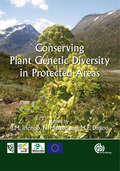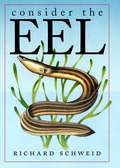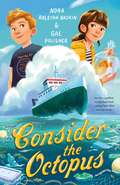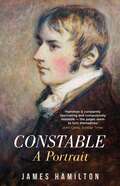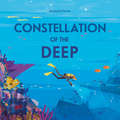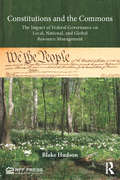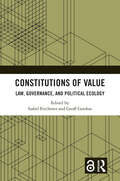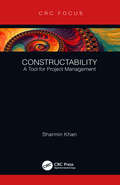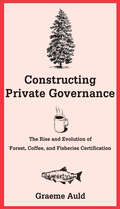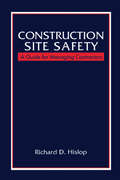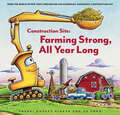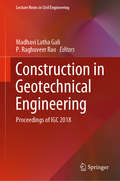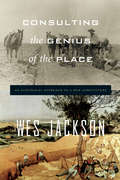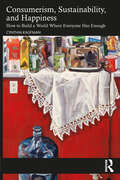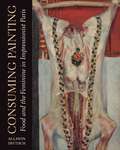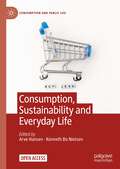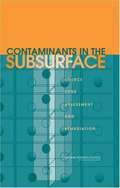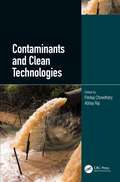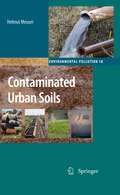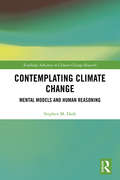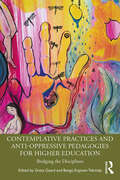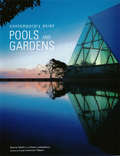- Table View
- List View
Conserving Plant Genetic Diversity in Protected Areas: Population Management of Crop Wild Relatives
by Nigel Maxted Mohammad Ehsan Dulloo José María IriondoRather than the usual focus on rare or endangered plants and ex situ efforts in conserving plant biodiversity, Iriondo (biodiversity and conservation, U. Rey Juan Carlos, Madrid, Spain) and the co-editors are devoted to the conservation of the genetic diversity of crop wild relatives in their natural environments. After presenting the increasingly urgent rationale for such conservation efforts, contributors to seven chapters address international/national initiatives including integrating efforts to maintain plant diversity with protected area management, issues in reserve location and design, monitoring technologies, and habitat recovery techniques. The volume includes highlighted case studies, and color plates of plants, interaction with local peoples for successful wild relative crop conservation, monitoring activities, a gene bank, and native plant nursery. Annotation ©2008 Book News, Inc., Portland, OR (booknews.com)
Consider the Eel
by Richard SchweidJournalist Richard Schweid first learned the strange facts of the freshwater eel's life from a fisherman in a small Spanish town just south of Valencia. "The eeler who explained the animal's life cycle to me did so as he served up an eel he had just taken from a trap, killed, cleaned, and cooked in olive oil in an earthenware dish," writes Schweid. "I ate it with a chunk of fresh, crusty bread. It was delicious. I was immediately fascinated." As this engaging culinary and natural history reveals, the humble eel is indeed an amazing creature. Every European and American eel begins its life in the Sargasso Sea--a vast, weedy stretch of deep Atlantic waters between Bermuda and the Azores. Larval eels drift for up to three years until they reach the rivers of North America or Europe, where they mature and live as long as two decades before returning to the Sargasso to mate and die. Eels have never been bred successfully in captivity.Consulting fisherfolk, cooks, and scientists, Schweid takes the reader on a global tour to reveal the economic and gastronomic importance of eel in places such as eastern North Carolina, Spain, Northern Ireland, England, and Japan. (While this rich yet mild-tasting fish has virtually disappeared from U.S. tables, over $2 billion worth of eel is still eagerly consumed in Europe and Asia each year.) The book also includes recipes, both historic and contemporary, for preparing eel.
Consider the Octopus
by Nora Raleigh Baskin Gae PolisnerWhen chance, or fate, throws two twelve-year-olds together on board a scientific research ship at the edge of the Great Pacific Garbage Patch, it’s not all smooth sailing!Jeremy “JB” Barnes is looking forward to spending the summer before seventh grade hanging on the beach. But his mother, a scientist, has called for him to join her aboard a research ship where, instead, he’ll spend his summer seasick and bored as he stares out at the endless plastic, microbeads, and other floating debris, both visible and not, that make up the Great Pacific Garbage Patch.Miles and miles away, twelve-year-old Sidney Miller is trying to come up with an alternate activity worthy of convincing her overprotective parents that she can skip summer camp.When Jeremy is asked to find the contact information for a list of important international scientists and invite them to attend a last-minute Emergency Global Summit, he's excited to have a chance to actually do something that matters to the mission. How could he know that the Sidney Miller he messages is not the famous marine biologist he has been tasked with contacting, but rather a girl making podcasts from her bedroom—let alone that she would want to sneak aboard the ship?Consider the Octopus is a comedy of errors, mistaken identity, and synchronicity. Above all, it is a heartfelt story about friendship and an empowering call to environmental protection, especially to our young people who are already stepping up to help save our oceans and our Earth.
Constable: A Portrait
by James HamiltonONE OF THE TIMES AND SUNDAY TIMES' BEST BOOKS FOR 2022'Eye-opening and full of surprises . . . A treasure' Sunday TimesJohn Constable, the revolutionary nineteenth-century painter of the landscapes and skies of southern England, is Britain's best-loved but perhaps least understood artist.His paintings reflect visions of landscape that shocked and perplexed his contemporaries: attentive to detail, spontaneous in gesture, brave in their use of colour. What we learn from his landscapes is that Constable had sharp local knowledge of Suffolk, a clarity of expression of the skyscapes above Hampstead, an understanding of the human tides in London and Brighton, and a rare ability in his late paintings of Salisbury Cathedral to transform silent suppressed passion into paint.Yet Constable was also an active and energetic correspondent. His letters and diaries - there are over one thousand letters from and to him - reveal a man of passion, opinion and discord, while his character and personality is concealed behind the high shimmering colour of his paintings. They reveal too the lives and circumstances of his brothers and his sisters, his cousins and his aunts, who serve to define the social and economic landscape against which he can be most clearly seen. These multifaceted reflections draw a sharp picture of the person, as well as the painter.James Hamilton's biography reveals a complex, troubled man, and explodes previous mythologies about this timeless artist, and establishes him in his proper context as a giant of European art.
Constable: A Portrait
by James HamiltonONE OF THE TIMES AND SUNDAY TIMES' BEST BOOKS FOR 2022'Eye-opening and full of surprises . . . A treasure' Sunday Times'A biography as rich with colourful characters as any novel' TelegraphJohn Constable, the revolutionary nineteenth-century painter of the landscapes and skies of southern England, is Britain's best-loved but perhaps least understood artist.His paintings reflect visions of landscape that shocked and perplexed his contemporaries: attentive to detail, spontaneous in gesture, brave in their use of colour. What we learn from his landscapes is that Constable had sharp local knowledge of Suffolk, a clarity of expression of the skyscapes above Hampstead, an understanding of the human tides in London and Brighton, and a rare ability in his late paintings of Salisbury Cathedral to transform silent suppressed passion into paint.Yet Constable was also an active and energetic correspondent. His letters and diaries - there are over one thousand letters from and to him - reveal a man of passion, opinion and discord, while his character and personality is concealed behind the high shimmering colour of his paintings. They reveal too the lives and circumstances of his brothers and his sisters, his cousins and his aunts, who serve to define the social and economic landscape against which he can be most clearly seen. These multifaceted reflections draw a sharp picture of the person, as well as the painter.James Hamilton's biography reveals a complex, troubled man, and explodes previous mythologies about this timeless artist, and establishes him in his proper context as a giant of European art.
Constellation of the Deep
by Benjamin FlouwA stylish picture book about an underwater quest for an elusive, bioluminescent plant perfect for young conservationists and fans of Wes Anderson's The Life Aquatic with Steve Zissou.Fox loves nature, and enjoys discovering strange and fascinating plants. He especially loves the seaside, and often walks the salty coastal trails with his cousin Wolf. One day, Seagull tells the two about an especially interesting underwater plant called the constellation of the deep. According to Seagull, it grows on the bottom of the ocean, but no one knows exactly where, and it glows in the dark. Before long, Fox has donned his diving equipment, including a wet suit, a snorkel, a diving mask, fins and more, and sets off on an underwater quest to find this incredible plant. Along the way, Fox observes many different kinds of ocean life, like crabs, starfish, algae and an amazing array of corals. He also comes across some underwater friends who try to help guide him to the elusive plant. But Fox despairs when he loses his camera -- even if he finds the constellation of the deep, how will he capture this amazing discovery? With spreads of informational content interspersed throughout, Constellation of the Deep is a charming picture book featuring the same character from The Golden Glow that details the wonders of the underwater world and celebrates observing the beauty of nature.
Constitutions and the Commons: The Impact of Federal Governance on Local, National, and Global Resource Management
by Blake HudsonConstitutions and the Commons looks at a critical but little examined issue of the degree to which the federal constitution of a nation contributes toward or limits the ability of the national government to manage its domestic natural resources. Furthermore it considers how far the constitution facilitates the binding of constituent states, provinces or subnational units to honor the conditions of international environmental treaties. While the main focus is on the US, there is also detailed coverage of other nations such as Australia, Brazil, India, and Russia. After introducing the role of constitutions in establishing the legal framework for environmental management in federal systems, the author presents a continuum of constitutionally driven natural resource management scenarios, from local to national, and then to global governance. These sections describe how subnational governance in federal systems may take on the characteristics of a commons – with all the attendant tragedies – in the absence of sufficient national constitutional authority. In turn, sufficient national constitutional authority over natural resources also allows these nations to more effectively engage in efforts to manage the global commons, as these nations would be unconstrained by subnational units of government during international negotiations. It is thus shown that national governments in federal systems are at the center of a constitutional 'nested governance commons,' with lower levels of government potentially acting as rational herders on the national commons and national governments potentially acting as rational herders on the global commons. National governments in federal systems are therefore crucial to establishing sustainable management of resources across scales. The book concludes by discussing how federal systems without sufficient national constitutional authority over resources may be strengthened by adopting the approach of federal constitutions that facilitate more robust national level inputs into natural resources management, facilitating national minimum standards as a form of "Fail-safe Federalism" that subnational governments may supplement with discretion to preserve important values of federalism.
Constitutions of Value: Law, Governance, and Political Ecology
by Isabel Feichtner and Geoff GordonGathering an interdisciplinary range of cutting-edge scholars, this book addresses legal constitutions of value. Global value production and transnational value practices that rely on exploitation and extraction have left us with toxic commons and a damaged planet. Against this situation, the book examines law’s fundamental role in institutions of value production and valuation. Utilising pathbreaking theoretical approaches, it problematizes mainstream efforts to redeem institutions of value production by recoupling them with progressive values. Aiming beyond radical critique, the book opens up the possibility of imagining and enacting new and different value practices. This wide-ranging and accessible book will appeal to international lawyers, socio-legal scholars, those working at the intersections of law and economy and others, in politics, economics, environmental studies and elsewhere, who are concerned with rethinking our current ideas of what has value, what does not, and whether and how value may be revalued.
Constructability: A Tool for Project Management
by Sharmin KhanThis book focuses on Constructability, a project management tool and its effectiveness in promotion of sustainable development and architecture. Constructability concentrates on the optimum use of construction knowledge and experience in planning, engineering, procurement and field operations to achieve overall project objectives. Keeping in view the requirement of promotion of sustainable architectural practices, the book is aimed at establishing effective relationship between constructability and sustainability, including application of the project management systems and guidelines for sustainable development, in a systematic manner. Key Features Focuses on relationship between constructability and sustainability in detail, with respect to their definitions and historical background. Summarizes formulation of recommendations and guidelines for various design and construction practices Provides an updated information database having overview of constructability studies and researches conducted so far Explores association of sustainable development to project management issues Includes relevant case studies
Constructing Private Governance
by Graeme AuldRecent decades have witnessed the rise of social and environmental certification programs that are intended to promote responsible business practices. Consumers now encounter organic or fair-trade labels on a variety of products, implying such desirable benefits as improved environmental conditions or more equitable market transactions. But what do we know about the origins and development of the organizations behind these labels? This book examines forest, coffee, and fishery certification programs to reveal how the early decisions of programs on governance and standards affect the path along which individual programs evolve and the variety and number of programs across sectors.
Construction Site Safety: A Guide for Managing Contractors
by Richard D. HislopAn important part of an organization's overall safety and health program involves safety management for contractors. A contractor with a poor safety program can adversely affect quality, productivity, schedules, and overall cost. This book explains how to manage project safety and improve the odds of an injury-free workplace.If project mana
Construction Site: Farming Strong, All Year Long (Goodnight, Goodnight, Construc)
by Sherri Duskey RinkerThe construction crew is back and ready to help out on the farm! Working together with new friends, they'll get the job done all year long. There's work to do! No time to waste! All year the farm's a busy place!Six hardworking trucks—with help from brand-new farm vehicles—have work to do in each of the seasons: planting in spring, building a barn in the summer, harvesting in fall, and finally tucking the animals in for a cozy winter. Construction enthusiasts will love this look at a farm through the year, and all the rough, tough work there is to do!Sherri Duskey Rinker and AG Ford, the author-illustrator team behind the many bestselling Goodnight, Goodnight, Construction Site books, bring their playful rhyming text and vibrant illustrations to another exciting tale of teamwork, sure to delight little construction fans everywhere.THE CREW VISITS THE FARM: This new addition to the bestselling Goodnight, Goodnight, Construction Site series features the same beloved trucks in an exciting new setting: a busy farm! They'll help build a barn, repair a road, and bring in crops, while the farm vehicles till, water, and harvest. EXPLORE EVERY SEASON ON THE FARM: Just right for teaching early concepts such as weather or seasons, this picture book invites little readers to experience adventure on the farm every day of the year! From learning about nature and growing food to watching the construction crew tuck the animals into their new barn, there's so much to see and do on the farm! At last everyone is tucked in tight for winter—and a sweet goodnight! ROLLICKING READ ALOUD: Sherri Duskey Rinker's bouncing, energetic rhymes make for a tremendously satisfying read-aloud experience, perfect for energetic kids who love construction. TEACHES TEAMWORK: Just like all the stories in the Goodnight, Goodnight, Construction Site series, this book emphasizes teamwork, collaboration, and working together—real-world skills presented to young readers in a fun, accessible setting! Perfect for:Fans of the Goodnight, Goodnight, Construction Site seriesTruck and construction vehicle enthusiastsGift-giversTeachers and librarians
Construction in Geotechnical Engineering: Proceedings of IGC 2018 (Lecture Notes in Civil Engineering #84)
by Madhavi Latha Gali P. Raghuveer RaoThis volume comprises select papers presented during the Indian Geotechnical Conference 2018. This volume discusses construction challenges and issues in geotechnical engineering. The contents cover foundation design and analysis, issues related to geotechnical structures, including dams, retaining walls, embankments and pavements, and rock mechanics and construction in rocks and rocky environments. Many of the papers discuss live case studies related to important geotechnical engineering projects worldwide, providing useful insights into the realistic designs and constructions. This volume will be of interest to students, researchers and practitioners alike.
Consulting the Genius of the Place: An Ecological Approach to a New Agriculture
by Wes JacksonLocavore leaders such as Alice Waters, Michael Pollan, and Barbara Kingsolver all speak of the need for sweeping changes in how we get our food. A longtime leader of this movement is Wes Jackson, who for decades has taken it upon himself to speak for the land, to speak for the soil itself. Here, he offers a manifesto toward a conceptual revolution: Jackson asks us to look to natural ecosystems-or, if one prefers, nature in general-as the measure against which we judge all of our agricultural practices.Jackson believes the time is right to do away with annual monoculture grains, which are vulnerable to national security threats and are partly responsible for the explosion in our healthcare costs. Soil erosion and the poisons polluting our water and air-all associated with agriculture from its beginnings-foretell a population with its natural fertility greatly destroyed.In this eloquent and timely volume, Jackson argues we must look to nature itself to lead us out of the mess we've made. The natural ecosystems will tell us, if we listen, what should happen to the future of food.
Consumerism, Sustainability, and Happiness: How to Build a World Where Everyone Has Enough
by Cynthia KaufmanWhat would it take to have a world where everyone had enough? How can we eliminate poverty, leave enough for nonhuman nature, and increase well-being? This book explores ways the reader can live their life, engage with cultural change, and engage with policy making, to build that world. We are presently on a path to environmental destruction, as our societies are driven by forces which leave many people without what they need to meet their basic needs, while also wasting vast resources on an unsatisfying consumer economy. The current system does not lead to a sense of wellbeing, even among those who are relatively materially comfortable. This book focuses on solutions for building a world of enough. It explains how we can reorient our thinking and take the steps necessary to transform our social systems. It looks at ways to reduce the insatiable desire for status and consumption that drive our economies. It focuses on emerging approaches to economics that take well-being as their goal and explores the policies that are crucial for getting there, such as reducing inequality, investing in public goods, and reducing work time. The book arms the reader with a variety of tools for building a world where everyone has enough for a good life.
Consuming Painting: Food and the Feminine in Impressionist Paris
by Allison DeutschIn Consuming Painting, Allison Deutsch challenges the pervasive view that Impressionism was above all about visual experience. Focusing on the language of food and consumption as they were used by such prominent critics as Baudelaire and Zola, she writes new histories for familiar works by Manet, Monet, Caillebotte, and Pissarro and creates fresh possibilities for experiencing and interpreting them. Examining the culinary metaphors that the most influential critics used to express their attraction or disgust toward painting, Deutsch rethinks French modern-life painting in relation to the visceral reactions that these works evoked in their earliest publics. Writers posed viewing as analogous to ingestion and used comparisons to food to describe the appearance of paint and the painter’s process. The food metaphors they chose were aligned with specific female types, such as red meat for sexualized female flesh, confections for fashionably made-up women, and hearty vegetables for agricultural laborers. These culinary figures of speech, Deutsch argues, provide important insights into both the fabrication of the feminine and the construction of masculinity in nineteenth-century France. Consuming Painting exposes the social politics at stake in the deeply gendered metaphors of sense and sensation.Original and convincing, Consuming Painting upends traditional narratives of the sensory reception of modern painting. This trailblazing book is essential reading for specialists in nineteenth-century art and criticism, gender studies, and modernism.
Consuming Painting: Food and the Feminine in Impressionist Paris
by Allison DeutschIn Consuming Painting, Allison Deutsch challenges the pervasive view that Impressionism was above all about visual experience. Focusing on the language of food and consumption as they were used by such prominent critics as Baudelaire and Zola, she writes new histories for familiar works by Manet, Monet, Caillebotte, and Pissarro and creates fresh possibilities for experiencing and interpreting them. Examining the culinary metaphors that the most influential critics used to express their attraction or disgust toward painting, Deutsch rethinks French modern-life painting in relation to the visceral reactions that these works evoked in their earliest publics. Writers posed viewing as analogous to ingestion and used comparisons to food to describe the appearance of paint and the painter’s process. The food metaphors they chose were aligned with specific female types, such as red meat for sexualized female flesh, confections for fashionably made-up women, and hearty vegetables for agricultural laborers. These culinary figures of speech, Deutsch argues, provide important insights into both the fabrication of the feminine and the construction of masculinity in nineteenth-century France. Consuming Painting exposes the social politics at stake in the deeply gendered metaphors of sense and sensation.Original and convincing, Consuming Painting upends traditional narratives of the sensory reception of modern painting. This trailblazing book is essential reading for specialists in nineteenth-century art and criticism, gender studies, and modernism.
Consumption, Sustainability and Everyday Life (Consumption and Public Life)
by Kenneth Bo Nielsen Arve HansenThis open access book seeks to understand why we consume as we do, how consumption changes, and why we keep consuming more and more, despite the visible damage we are doing to the planet. The chapters cover both the stubbornness of unsustainable consumption patterns in affluent societies and the drivers of rapidly increasing consumption in emerging economies. They focus on consumption patterns with the largest environmental footprints, including energy, housing, and mobility and engage in sophisticated ways with the theoretical frontiers of the field of consumption research, in particular on the ‘practice turn’ that has come to dominate the field in recent decades. This book maps out what we know about consumption, questions what we take for granted, and points us in new directions for better understanding—and changing—unsustainable consumption patterns.
Container Gardening - The Permaculture Way: The Permaculture Way: Sustainably Grow Vegetables & More In Your Small Space
by Valéry TsimbaAnyone, anywhere can grow fresh, healthy produce, foster biodiversity, and reconnect with nature by using the permaculture approach—no matter your space or experience. Permaculture—rooted in centuries-old techniques for growing food with care for the Earth—is the key to producing a bigger harvest than you ever thought possible on your balcony, patio, driveway, deck, and anywhere in between! With sustainability as her guiding principle, Valéry Tsimba enthusiastically instructs home gardeners of all skill levels and backgrounds in her proven container gardening methods, from start to finish. Use the principles of permaculture to increase your garden’s productivity, biodiversity, and beauty by starting small and going slow. Get set up: Pick the best planters and tools for your space and learn how to adapt to natural conditions like wind and sun exposure. Increase your harvest naturally with companion planting, small-space composting, chemical-free fertilizers, and staggered harvests. Learn which plants are best suited to container gardens, from leafy greens and pollinator-friendly flowers to strawberries and even melons! Containers make gardening more accessible for everyone. Whether you live in an apartment, have a disability or chronic illness, have never gardened before, or are an experienced gardener new to permaculture, Container Gardening—The Permaculture Way brings sustainable gardening within reach.
Contaminants In The Subsurface: Source Zone Assessment And Remediation
by National Research Council of the National AcademiesAt hundreds of thousands of commercial, industrial, and military sites across the country, subsurface materials including groundwater are contaminated with chemical waste. The last decade has seen growing interest in using aggressive source remediation technologies to remove contaminants from the subsurface, but there is limited understanding of (1) the effectiveness of these technologies and (2) the overall effect of mass removal on groundwater quality. This report reviews the suite of technologies available for source remediation and their ability to reach a variety of cleanup goals, from meeting regulatory standards for groundwater to reducing costs. The report proposes elements of a protocol for accomplishing source remediation that should enable project managers to decide whether and how to pursue source remediation at their sites.
Contaminants and Clean Technologies
by Pankaj Chowdhary Abhay RajContaminants and Clean Technologies provides valuable information on environmental contaminants such as industrial pollutants, micropollutants, pesticides, endocrine disruptors, pharmaceuticals, toxins, and hormones. It focuses on the various types of environmental contaminants discharged from various sources; their toxicological effects in environments, humans, animals, and plants; and their removal methods. It also covers, comprehensively, information on the contaminants released by various industries and agricultural practices, which cause severe threats to the environment. Features of the book: Elucidates systematic information on various types of environmental contaminants, and their fate and consequences Discusses contaminants such as endocrine disruptors, pharmaceutical waste, and personal care products Provides an overview of physicochemical and biological treatment technologies for sustainable development Details recent research finding in the area of environmental contaminants and their future challenges
Contaminated Urban Soils (Environmental Pollution #18)
by Helmut MeuserThis book gives a current overview of all facets of urban soils. Different urban land-use types in a number of examples worldwide are introduced. Many examples in different countries are provided in order to illustrate the situation in detail. The contaminant sources of urban soils (e.g., dust deposition, contamination along roadsides, contamination of floodplains, application of wastewater, anthropogenic deposits) are comprehensively presented. For practical application purposes a key with which to identify technogenic materials during field work is presented. Features like reductomorphic conditions in landfill soils, acidification of coal mining heaps and the impact of physical characteristics such as sealing are taken into consideration in the context of the contamination problem. The mobility of contaminants in the soils under consideration is introduced and discussed. The content of the book, however, is not limited to the description of contaminated urban soils. Different methods of assessment (classification, functional assessment, assessment focused on pathways with reference to standardized exposure scenarios) are introduced. Finally, quality standards for contaminated land in a number of countries are listed, compared and discussed. The book links up the contamination problem of urban soils with geographical aspects such as the historical development of city growth, the process of urbanization and the urban-to-rural gradients. Accordingly, the reader will be able to understand the specific problems of contaminated urban soils and will find sensible approaches to assessment.
Contemplating Climate Change: Mental Models and Human Reasoning (Routledge Advances in Climate Change Research)
by Stephen M. DarkGlobal climate change policy has failed us all, but what is the reasoning that underlies this failure? Why are some people more disposed to reflect on confounding issues like climate change, recognise the danger, seek a solution, and act accordingly, more than others? This book is concerned with how we think and act in response to climate change. In particular, faced with deep uncertainty and the multifaceted complexities that characterise the climate change conundrum, how the various actors and institutions involved in the policymaking process make decisions that both aid and impede in the design and implementation of climate change policy. This book focuses on how these actors and institutions frame and use the knowledge available – under conditions of competing ideologies and interests – and synthesise it to form often-disparate mental models, or worldviews, that inspire them to become firm advocates of meaningful climate change action or indeed, sceptics that continue to downplay the threat, and hence the need for urgency. By exploring how we think about climate change and the disparate mental models we hold as a result, this book explores why humankind has thus far failed in its endeavours to solve the climate change problem. This book will be of great interest to students and scholars of climate change, environmental policy and environmental psychology.
Contemplative Practices and Anti-Oppressive Pedagogies for Higher Education: Bridging the Disciplines
by Greta Gaard Bengü Ergüner-TekinalpThis volume explores mindfulness and other contemplative approaches as strategic tools for cultivating anti-oppressive pedagogies in higher education. Research confirms that simply providing students with evidence and narratives of economic, social, and environmental injustices proves insufficient in developing awareness and eliciting responses of empathy, solidarity, and a desire to act for change. From the environmental humanities to the environmental sciences, legal studies, psychology, and counseling, educators from a range of geographical and disciplinary standpoints describe their research-based mindfulness pedagogies. Chapters explore how to interrupt and interrogate oppression through contemplative teaching tools, assignments, and strategies that create greater awareness and facilitate deeper engagement with learning contents, contexts, and communities. Providing a framework that facilitates awareness of the links between historic and current oppression, self-identity, and trauma, and creating a transformative learning experience through mindfulness, this book is a must-read for faculty and educators interested in intersections of mindfulness, contemplative pedagogies, and anti-oppression.
Contemporary Asian Pools and Gardens
by Luca Invernizzi Tettoni Chami Jotisalikorn Karina ZabihiContemporary Asian Pools and Gardens?showcases the continent's most spectacular modern gardens and water features. Private swimming pools and gardens have increasingly become an integral part of modern living spaces - and you don't necessarily have to live in a house to have one. This book in the Contemporary Asian Home series includes special chapters on walkways, lighting, gates and roof gardens, as well as the latest in infinity, lap and rooftop pools, displaying some of the most sought after designs in the region
